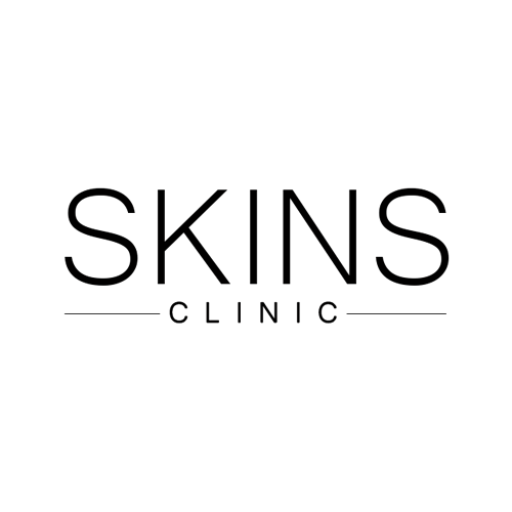
BROWS
What is microblading?
‘Microblading is a type of eyebrow architecture. It is all about creating the best shape for each face – a totally bespoke approach for each client,’ explains Jalaf.
‘The process is very precise thanks to the tool that is used which is effectively like a pen with the nib being a sloped blade with 10-12 little needles at the end – needles that don’t penetrate the skin but just delicately scratch the surface, much like a paper cut.
‘The needle very finely implants featherweight strokes with a medical grade pigment on the epidermis layer for the skin, creating fine, realistic and natural hair strokes.’
How is microblading eyebrows different to having your brows tattooed?
‘Microblading, unlike tattooing, is not in the deep layer of skin, but more on the surface. This is also not permanent, and the colour fades within 18 months.
What is microshading and how is it different to microblading?
Yes the names might sound confusingly similar but microblading and microshading are totally different.
Both forms of semi-permanent make-up for your eyebrows, they have a few subtle but important differences. Compared to microblading’s super precise, individual hair look, microshading has a much softer finish. Think of it like using a brow pencil compared to a brow powder or pomade. Where microblading tattoos hair-like strokes in your existing brows, microshading tattoos tiny dots along your brows for a less defined finish.
Not sure which technique is for you? often technicians combine both methods to create the most realistic and natural finish.
Can you be allergic to microblading?
‘There are people who are sensitive and allergic to some pigments, but this is extremely rare.
How long does microblading last?
‘Microblading lasts anything between 12-18 months, but the longevity of the pigment will depend on your skin type and technique performed like amount of ink and depth.
‘People with slightly more oily skin will tend to last around the 12 month mark before needing a top up, but those with normal skin can last up to 18 months.
‘Your brows will eventually fade away if you don’t continue with top ups every 18 months or so.
LIPS
Lip blushing is a type of semipermanent cosmetic tattooing procedure achieved by depositing pigments in your lips using small needles.
While also sometimes called lip tattooing, this is more of a cosmetic enhancement than traditional tattoo art. Lip blushing focuses on altering both color and shape to create younger-looking lips.
Everyone’s lips are different, and there’s no one standard of beauty. But if you would like to change the appearance or color of your lips, you may be interested in lip blushing.
However, there are many aspects of the procedure to consider, including:
- your pain tolerance
- possible side effects (such as a breakout of herpes).
- skin tone
Expect to see full results from lip blushing in about a month. Your provider may ask you to come in for a follow-up appointment at this time to assess your results.
A touch-up session may be required after a couple of months to achieve the precise color you want.
Some exceptional cases require a different approach, for example, darker lips or hyperpigmented lips due to smoking or genetic factors. In this case, the usual treatment consists of 3 sessions in order to achieve the best result. A “neutralization” of the darker shades has to be done using specific colors to ensure a clean background for the desired final color, and hyperpigmentation is expected during the healing process due to the needling.
Lip blushing carries the same side effects and risks as traditional tattooing. Minor side effects are to be expected, though they’ll decrease as your lips heal. These include:
- redness
- pain
Without proper aftercare and healing, your lips may become infected. Contact us if you notice:
- excessive swelling
- worsening pain
Other possible side effects include:
- itchiness
- rash
- scars
- skin bumps
- uneven coloring
- hyperpigmentation (in this case, special aftercare will be required).
EYELINER
The eyes are the most expressive part of a woman’s face. The brilliance of women’s eyes reflects true beauty when this beauty blossoms in the heart. To emphasize the brightness of beautiful eyes, makeup comes to the aid of the beautiful half of humanity.
But still, this is something that takes a great deal of time to do on a daily basis using makeup, and that is where micropigmentation helps.
Our micropigmentation procedures for the eyes offer a large variety of concepts ( texture, color and shape), from the softest hairline on the lashes line to bold designs, however, it is always advised to start with a soft look. Smoked liner is also a good choice for expressing personality without a dramatic look.
This procedure lasts anywhere from 1–3 years, but preferably early retouch is what we advise. All the colors are organic pigments and easy to remove by laser, but the more color added, the longer it takes to remove it; this also depends on the patient’s skin density, age, and levels of water or oil.
We don’t advise the use of any other color except black, as it makes it easier to remove in case the patient decides.
The pain is minimal, the procedure takes around 45 minutes, and there is no downtime except for the more dramatic choices of shape.
Eyeliner treatment carries the same side effects and risks as traditional tattooing. Minor side effects are to be expected, though they’ll decrease rapidly over the course of 2–4 days.
These include:
- swelling
- redness
- pain
- itchiness
SCALP PIGMENTATION
You may have already heard of microblading for full brows.
Did you know there’s a similar practice for your scalp?
This procedure is known as scalp micropigmentation (SMP), which creates the illusion of fuller hair.
But what’s the exact difference?
“Although both fall under the category of micropigmentation, [microblading and micropigmentation] are very different methods of implanting pigment.
While microblading is typically done with a manual blade, micropigmentation is performed using an electric tattoo device. This is because more power is needed to penetrate the skin on your scalp, which is thicker than the skin under your eyebrows.
How does SMP work, and who can benefit from it?
The goal of SMP isn’t to create hairlike lines as you would when microblading eyebrows, but instead to use tiny, layered dots and lines in different hues of color to replicate the look of a shadow and/or lines on your scalp.
This style, primarily referred to as pointillism, is done to create natural-looking depth and definition and the lines to create a hair line.
A skilled practitioner will work to ensure the like a natural hair follicle and blend in seamlessly with your complexion.
This process may be useful for people who experience all forms of hair loss.
- cancer
- alopecia
- thinning hair
- male and female pattern baldness
Does it hurt? What’s the process like?
Before the procedure, your SMP practitioner will apply a topical numbing agent to your scalp. That said, it’s good to keep in mind that there may still be some discomfort. However, how much discomfort largely depends on your pain tolerance.
- Shower before each treatment. You won’t be able to wash or wet your scalp (this includes sweating excessively) for four days after each appointment.
- Each treatment typically takes between four and five hours.
- How many treatments you need will depend on the amount of scalp getting SMP. Even if it’s
only for a small area like a widow’s peak.
- Treatments will be scheduled a few weeks apart.
In the weeks between treatments, don’t go swimming, use steam or sauna rooms, or take extremely hot showers that may cause a steam storm.
Avoid exposing your scalp to the sun for the first four days (wearing a hat is fine). On the fifth day after treatment, you can expose the treated skin to sun for one hour, or 45 minutes if you have very fair skin.
Keep in mind, though, that less sun exposure to the treated area means better long-term retention.
- Cosmetic Tattooing at Skins Clinic


